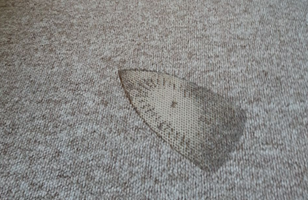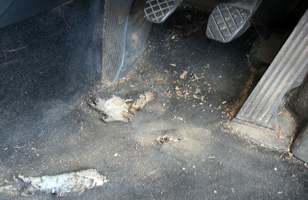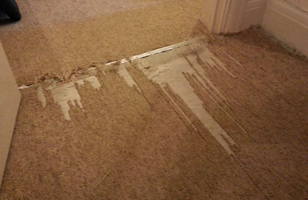REPAIRING CARPETS: A HOW-TO GUIDE
At Carpet Surgeon we pride ourselves on our ability to repair damaged carpets to leave them looking as good as new without incurring the often expensive cost of a replacement. With that in mind we thought we would provide you with a step-by-step guide on how we achieve this.
We begin by correctly identifying the problem and how it was caused. This can be for a range of reasons from iron burns to spillages to pet damage. It’s important to determine the exact cause as that will influence the correct way to remedy the problem.
Once you’ve determined the root cause of the problem the next stage is to identify the size of the damage as this (similarly to the cause of the problem) will determine how best to repair the damage.
There are several methods of repairing damaged carpets with some examples being retufting, reseaming or a full transplant. As mentioned above, the size of the damaged area should serve as a guide to which method best serves your particular problem. Any size of damaged area up to and including the size of a golf ball can generally be retufted; anything bigger is probably better being transplanted.
To retuft the damaged area doesn’t always necessarily warrant using a donor carpet; it’s sometimes possible to retuft using the existing fibres. This is where our expertise comes in to play as we’re more than capable of determining the best method of repair.
RETUFTING
You should remove the damaged fibres carefully without damaging or disturbing the carpet’s backing. It’s better to be slow and steady here without rushing as this can cause further damage leading to more repairs.
If the customer has no spare carpets either from offcuts or from a piece laid in a cubby hole (for example), then it’s possible to take what’s needed from the perimeter of the room. Once you’ve sourced the piece of replacement carpet you should implant individual tufts of it and secure each strand at the base until the area is filled.
Once this has been achieved the area should be left for a minimum of three hours before vacuuming etc can commence.
DONOR CARPETS
If the damaged area is bigger than the size specified above then the repair will require a piece of donor carpet. Bigger damaged areas are more likely caused by iron burns and pet damage than spillages. The damaged area should be removed with care, down to the underlay or the sub floor section beneath the carpet.
Once this has been done the donor piece of carpet should be cut down to the exact size needed before sealing all of the edges to prevent fraying. Then, using specialist adhesives and tapes designed with jobs such as this in mind seam the piece of donor carpet into the area left when the damaged area was removed.
Next, using specialist tool, blend the two pieces together seamlessly so that even the trained eye cannot detect that a damaged piece of carpet has been replaced. As with the retufting process, a minimum of three hours should be left before vacuuming the area. This will maximise the effectiveness of the repair and ensure no further damage is done.
Both retufting and donor carpet repairs take approximately three hours to perform; it all depends on what caused the damage in the first place. Spillages will more often than not require retufting (although the size of the damaged area will determine the exact solution); whereas pet damage and iron burns etc will often require a piece of donor carpet. Irrespective of the size of the damaged area, Carpet Surgeon is on hand to save you the expense of buying a new carpet and make your existing carpet look as good as new!







